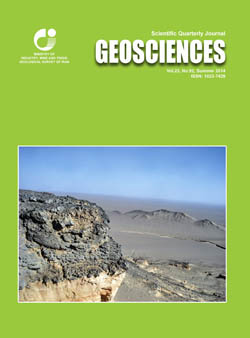Document Type : Original Research Paper
Authors
1 Assistant Professor, Department of Geology, Faculty of Basic Science, University of Bu-Ali Sina, Hamedan, Iran
2 Associate Professor, Department of Geology, Faculty of Basic Science, University of Tarbiat Modarres, Tehran, Iran
3 Associate Professor, Department of Geology, Faculty Of Earth Science, University of Shahid Beheshti, Tehran, Iran
Abstract
Hamedan area is in the NW of the Sanandaj-Sirjan Zone. Different types of plutonic rocks are outcropped in this area which in turn, surrounded by the various metamorphic rocks (regional and contact metamorphism). Four ductile deformation stages were recognized. Each of them is accompanied with formation of fold, foliation and lineation. The first generation foliation (S1) and folds (F1) formed at the first stage of deformation (D1). The second deformation defined by refolding of the first axial surface and forming of the second foliation (S2) and folds (F2). This stage is the strongest deformation and formed main foliation in this area. Axis of these folds changes from horizontal to vertical. The direction of this fold axis follows the Alvand pluton form. The second foliation shows wide dispersal in orientation and their trends follows the Alvand pluton form. The third deformation (D3) defined by close to open, mostly upright with curved hinges folds (F3) and the axial-plane foliation (S3). This foliation (S3) is predominant in areas east of the Alvand pluton and is crenulation cleavage to fracture foliation. The most axis of F3 show N165 plunging. Because of the interference pattern between the first, second and third folding at the regional and contact metamorphic rocks, these stages of deformation are coaxial deformation. D4 is characterized by a crenulation cleavage (S4) and a mineral lineation (L4(. L4 have a NE-SW plunging. This lineation does not exist at the contact metamorphic rocks. The rotation of axis of F2 and the second foliation is obvious around the Alvand pluton. This rotation shows that the final strain field is followed the pluton forms and probably the main granitic Alvand pluton intruded during the second deformation in this area.
Keywords

